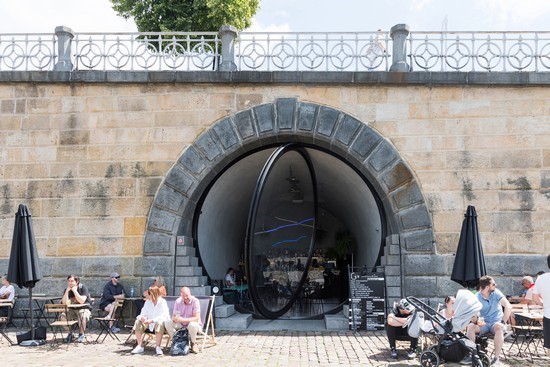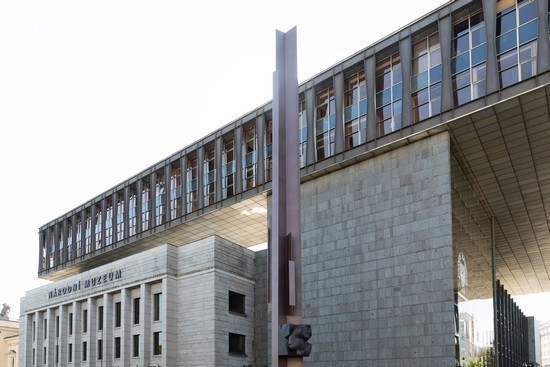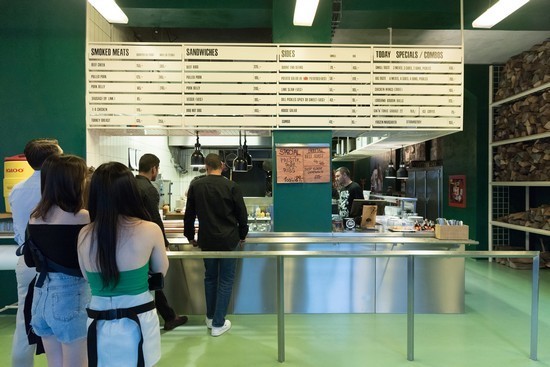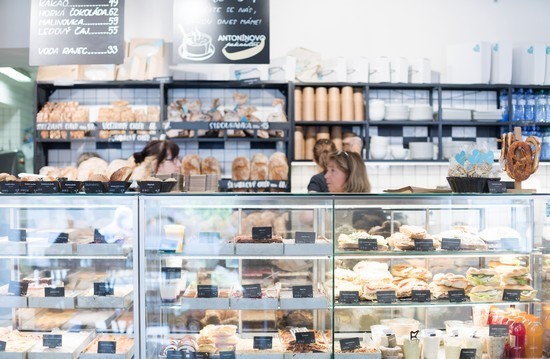Prague was justifiably popular with
visitors before the
COVID-19 pandemic, but life here often felt slightly out of
whack before 2020. As a small counterbalance to an immense tragedy, the
pandemic offered the city a chance for a much-needed reset. Residents had time
to rediscover sites and neighborhoods that were long since abandoned by tourists. The sudden lack of foreign guests forced restaurant owners to refocus
on customers who actually live there. Historic attractions underwent
renovations. And new projects that went ahead with openings in 2020 and 2021 have
made the city even more fun than before.
اضافة اعلان
As a result, Prague now feels like a place with less
touristic gimcrackery and more local flavor. It also has a younger vibe than
many visitors might expect, explains Jan Valenta, who blogs about local
restaurants and offers food tours through his company, Taste of Prague.

“The biggest difference, I think, between a Western
country like the
US and a post-communist country like us is the distribution of
wealth among generations,” Valenta said. “The older generation here doesn’t
have the money to spend in these restaurants that young people go to.”
Valenta, 44, notes that he defines young “very
generously.” But by any definition, the city sports more youthful vibrancy than
in previous years, which might account for the newfound popularity of public
spaces, including the embankments along the Vltava River, as well as islands
and parks.
“There’s more of
a sense of community than there used to be five years ago,” Valenta said.
“People are more willing to meet and spend time together outside. That’s a very
new development, I think, and it’s great.”
Some of those new spaces include Čapadlo, a scenic
but overlooked spot on the Old Town embankment that debuted as an open-air
concert venue and multipurpose hangout in mid-2021. Even attractions with a bit
of history, like the popular promenade on the Rašín embankment known as
Náplavka, gained new features during the pandemic, including new cafes and
pop-up bars in the former ice-storage vaults in the retaining wall along the riverside
walkway.
A renewed culture
On the arts and culture
front, the biggest debut took place in February, when the Kunsthalle Praha
exhibition space opened in a former electrical substation near the foot of the
castle steps.

Both the National Museum and the State Opera
reemerged after their own renovations in 2020, while Salm Palace, an important
National Gallery exhibition space at Prague Castle, reopened after
reconstruction this year; the current exhibition, “Zenga — Japanese Zen
Paintings from the Kaeru-An Collection,” runs through October.
People are more willing to meet and spend time together outside. That’s a very new development, I think, and it’s great.
Barbecue, beer, and bakeries
Most of the big new draws
are in the world of food — and many are away from the central districts of Old
Town and Malá Strana. That might sound daunting, but Prague’s metro and extensive
tram network make crosstown travel easy, as Melissa Joulwan, a Prague resident
and co-host of the “Strong Sense of Place” literary travel podcast, often tells
visitors.
“People who are not used to public transportation
might not understand that it’s so easy to get around, and places that might
seem far away are really not far away at all,” she says. “It’s so much fun to
look at the architecture in other neighborhoods. There’s always something
beautiful or interesting to see.”

With a 72-hour
ticket that costs 330 koruny (around $13.6), or a 30-minute ticket for 30
koruny, it’s easy to reach up-and-coming neighborhoods like Holešovice, where
Big Smokers started serving its spot-on Austin, Texas-style barbecue to a
relaxed crowd at the end of 2019 (the Big Taste platter serves four kinds of
smoked meat and four sides, enough for three diners, for 765 koruny), not far
from a popular smash burger takeout window that opened under an unprintable name
in 2021.
It’s so much fun to look at the architecture in other neighborhoods. There’s always something beautiful or interesting to see.
Take another metro and in a few minutes you can
check out the new arrivals in the once run-down Smíchov district, like the
globe-spanning food court Manifesto Market. Its stylish Anděl branch opened in
September 2021, shortly before it shuttered its original location near the
Florenc metro station; highlights include tacos, Italian seafood sandwiches,
and Brazilian barbecue. Just around the corner is another 2021 arrival, Bon
Ramen, the third outpost of a local micro-chain.

Even neighborhoods with an already enviable list of
restaurants got some fun new arrivals. The Karlín district was already cool
half a decade ago, but with the arrival of casual dining spots like 2021’s
home-cooking-inspired Kro Bistro & Bar, serving rotisserie chicken, roasted
cauliflower, and housemade kimchi, it has only gotten cooler. The extensive
development projects transforming the nearby embankment are ongoing, but they
already host a handful of new cafes, bars, and restaurants, like Ye’s Kafe Wine
— a day cafe with great vino, housemade lemonades, creative brunch dishes,
cakes, and easy-sipping cocktails.
One trend runs citywide: better bakeries and pastry
shops.
Because of social distancing and other public health
restrictions, Prague’s famed drinking culture saw less growth than in previous
eras. That said, a handful of important watering holes have opened, including
this year’s grand reopening of the vintage-1912 American Bar inside the
landmark Obecní Dům, or Municipal House, on Republic Square, after a long
closure. Other new arrivals include Pult, a specialty beer bar focusing on
expertly tapped, foam-capped Czech lagers, and Oh My Yalta, a cocktail bar run
in partnership with the cult Czech distiller Martin Žufánek, maker of great
absinthes, unusual fruit distillates, and a treasured local gin known as OMG.
Where to lay your head
The recent cancellation of
virtually all pandemic restrictions and a severe, resident-pleasing reduction
in short-term apartment rentals have only heightened the sense of a city in
full bloom.
While a few hotels did close for good during the
lockdown, they were outweighed by several beautiful new arrivals, like 2021’s
Hotel Cube, a contemporary boutique hotel housed in a former cinema from the
1920s (in August, doubles start around 149 euros, or about $157).

Famous for Viennese coffee and gourmet groceries,
Austria’s Julius Meinl group opened its first Prague hotel, the Julius, this
summer; many of the 168 rooms and suites have full kitchens or kitchenettes (in
August, doubles start around 145 euros).
On that same New Town square, Senovážné Náměstí, the
Hyatt’s new Andaz Prague opened its 176 luxuriously appointed rooms this year;
the landmark neoclassical building, Cukrovarnický Palác, which the hotel
translates as Sugar Palace, dates from 1916 (in August, doubles start around
342 euros).
That seems like enough to justify a visit. But to sweeten
the deal, the city just launched a tourist card, Prague Visitor Pass (1,800
koruny for a 48-hour version). In addition to unlimited travel on public
transportation, it offers free entry to dozens of museums, galleries, gardens,
towers, and historic sites.
Read more Travel
Jordan News











